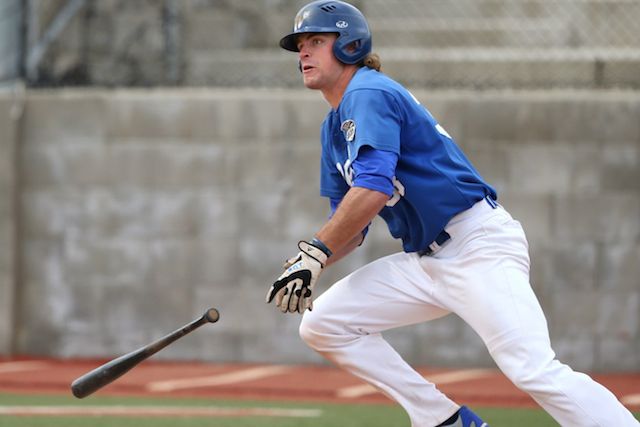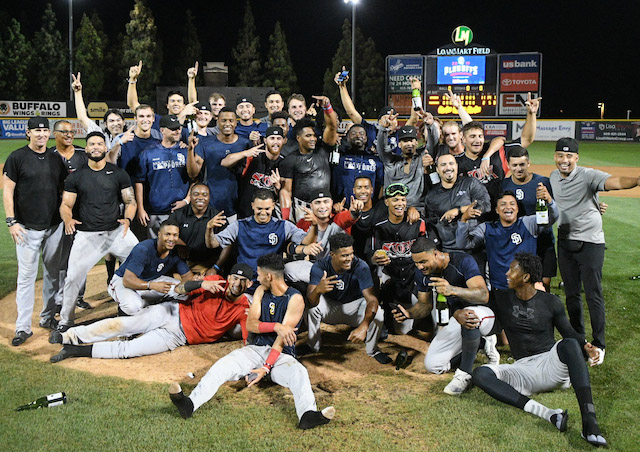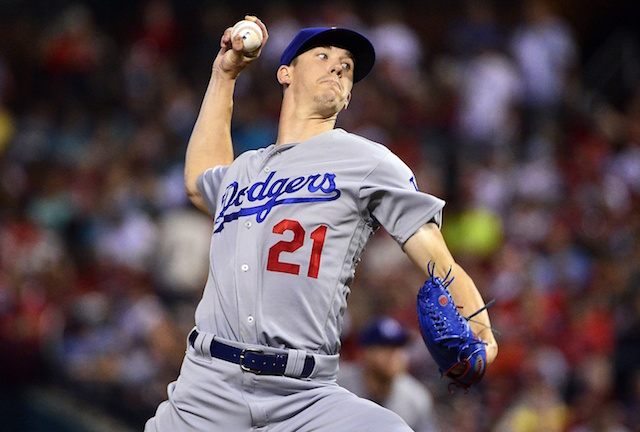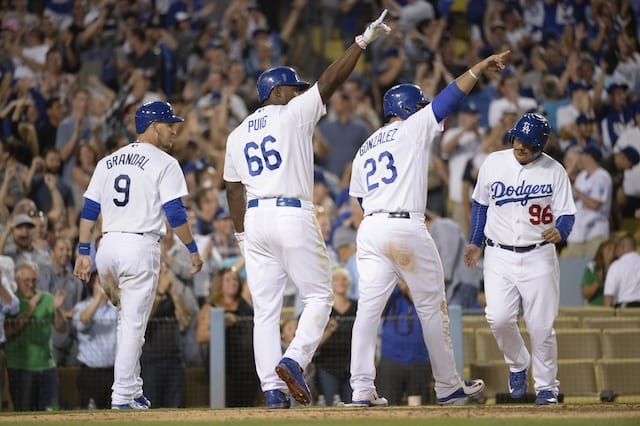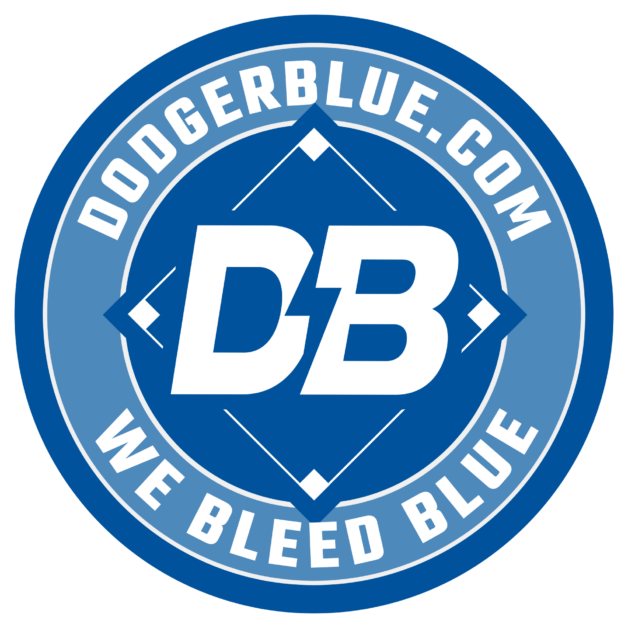PAGES: 1 | 2
Ranking the top 20 prospects is where the Los Angeles Dodgers’ farm system really begins to take shape. It also demonstrates just how well the Dodgers have restock the cupboard since it grew barren.
From big-bonus international signings to smaller commitments, early draft picks to steals, the Dodgers have done a tremendous job at identifying and developing talent in several different ways.
20. Dennis Santana, RHP
Signed a month before his 17th birthday in 2013, the young Dominican prospect was originally tried as a shortstop. However, after hitting just .198 in his debut, the Dodgers decided to move Santana to the mound. The results were excellent, as he posted a 1.05 ERA in 34.1 innings.
In 2015, Santana came to the states and pitched for the Arizona League Dodgers and Rookie-Level Ogden. He struggled mightily with the Raptors, an unexpected outcome for any young pitcher in the Pioneer League.
But, Santana salvaged his season after moving to the Arizona League, where he posted a 2.42 ERA in 26 innings, including a six-inning, 11-strikeout performance in his second-to-last start.
Last year, Santana went to the Midwest League and continued to excel, striking out 124 batters in 111.1 innings for Low-A Great Lakes. He surrendered just 84 hits and two home runs, but did walk 56 batters.
He struggled in the postseason, making just two appearances and giving up seven runs on four hits and walking five in three innings. This was likely the result of Santana tiring at the end of a season in which he pitched more than twice as many innings as the previous year.
Santana attacks hitters with a lively fastball in the low to mid 90s. His slider has hard, two-plane break and is a strikeout pitch. He shows confidence in a changeup but still has some work to do with it. Santana’s curveball is a show-me pitch right now.
While he’s not polished by any means, Santana is athletic and projectable. His delivery is sound, featuring a traditional windup. He must improve his command to remain a starter.
Turning 21 in April, he’ll likely break camp and head to High-A Rancho Cucamonga, which could be an intimidating challenge for the young righty. If the changeup and command continue to progress, he could end up as a No. 3 or 4 starter down the line.
19. Keibert Ruiz, C
Another relatively unheralded signing, Ruiz joined the Dodgers in 2014 on his 16th birthday. He made his debut the following summer in the Dominican Summer League and batted .300 in 44 games. He hasn’t stopped hitting since.
In 2016, the 17-year-old Ruiz was brought over to the United States and thrown into rookie ball. He responded with aplomb. First, he was tested in the Arizona League and passed with flying colors, slashing .485/.513/.667 in just eight games before being promoted to Ogden.
With the Raptors, the offensive onslaught continued. Ruiz ended up hitting .354 with an .896 on-base plus slugging percentage in 48 games. He only hit two home runs last season but did add 22 doubles in 56 games.
Ruiz isn’t the biggest prospect, listed at 6’0 and 165 lbs., so he plays to his strengths. Surprisingly, he incorporates a leg kick in his swing, but it’s for timing purposes and not to generate more power. Ruiz sprays the ball all over the field and controls the strike zone pretty well.
On defense, Ruiz has been praised for his ability to handle a pitching staff, even at the ripe old age of 17. He has quiet hands behind the plate and plenty of agility to block balls in the dirt. He only threw out about 20 percent of attempted base stealers last season, but that’s as much on the pitchers as the catchers in the low Minors.
Ruiz will turn 19 years old in July, so he’ll play the majority of this season as an 18-year-old. He’s likely penciled in as Great Lakes’ starting catcher, which will make him one of the youngest players in affiliated ball to start the season.
18. Trevor Oaks, RHP
After undergoing Tommy John surgery and being undrafted out of high school, Oaks found his way to Cal Baptist and pitched well enough for the Dodgers to take him in the seventh round in 2014. In his debut, Oaks went to Ogden and struggled, as many pitchers have before him, posting a 6.31 ERA.
The following year, Oaks took off and hasn’t looked back. He joined the Loons and earned a late-season promotion to Rancho, totaling 125.2 innings and a 2.65 ERA. Last season, Oaks made just one start with the Quakes before going to Double-A Tulsa, where he made 10 starts with a 2.14 ERA.
He moved up again, joining Triple-A Oklahoma City, posting a 3.00 ERA in another 10 starts before his season ended prematurely because of a groin injury.
Oaks adjusted his workout regimen last offseason and added weight and strength, increasing his fastball velocity. He used to sit in the low 90s, but now he regularly gets into the mid 90s with his sinker.
The right-hander mixes in a cutter and a changeup to keep hitters off balance. His breaking ball lags behind the other offerings. He’s also worked on adding a splitter to his repertoire.
While his velocity picked up, Oaks focuses more on pitching to contact than missing bats. His sinker results in plenty of ground balls, as evidenced by his career 2.33 ground ball/flyball ratio. He also throws lots of strikes, with only 53 walks in 312.1 career innings.
This season should be the year that Oaks reaches the Majors. While the Dodgers’ pitching depth is profound, there’s a good chance that Oaks hears his name called to fill a hole in the big league rotation.
17. Dustin May, RHP
May doesn’t just have glorious hair, he’s also a pretty good pitching prospect. Drafted in the third round last year, May made his debut in the Arizona League, appearing in 10 games, pitching 30.1 innings and posting a 3.86 ERA. He struck out 34 batters and walked just four.
May’s fastball sits in the low 90s and touches a bit higher, but at his size (6’6, 180 lbs.) you can’t help but project him to throw a few ticks harder in the future. His slider gives him a swing-and-miss offering to rack up strikeouts, while his changeup still requires development.
Fun fact about May: he had a weird, twisting motion in his arm action while he was in high school, which prompted Dodgers’ brass to nickname him “Viper.” He has since adopted the nickname into his Twitter handle.
Heading into this season, it appears that May will begin the arduous climb up the Minor League ladder in A-ball. While he is fairly polished for a high school arm, there’s no need for the organization to rush him. Expect him to spend the entire year with Great Lakes.
16. D.J. Peters, OF
Another 2016 draft pick, Peters grew up in Glendora, Calif., which is about 30 minutes from Dodger Stadium. He was a fourth-round selection, the second time in as many years that the Dodgers drafted a hitter out of a junior college in the fourth round; the other draftee is ranked even higher than Peters.
He was headed to Ogden as a 20 year old, where he was expected to mash. And mash he did. Peters slashed .351/.437/.615 in 66 Pioneer League games, leading the circuit in OPS, placing second in doubles and third in home runs.
After a heartbreaking end to the Raptors’ playoff run, Peters was promoted to Great Lakes to participate in their postseason race, and earned a ring for his contributions. He put together an .810 OPS in 20 at bats with the Loons in their championship run.
It is now universally accepted that Peters bears a striking resemblance to Jayson Werth, both physically and in prospect terms. He’s about the same size, is right-handed all the way and plays the outfield.
Peters offers plus-power projection with his swing and strength, adding plenty of plate coverage thanks to his long arms. There is some swing-and-miss in his game, but he walks enough to offset the lost value on balls in play.
Defensively, Peters is surprisingly nimble and spent most of his time during his debut season in center field. At his size, he projects to lose a step or two on his way to the Majors, but has enough arm to settle in to right field just fine.
Already 21, Peters could move quicker than your normal college draftee. An aggressive assignment with the Quakes could be in his future and he could reach the upper Minors by season’s end.
CONTINUE READING: Right-handed pitcher, intriguing outfielder, and more





